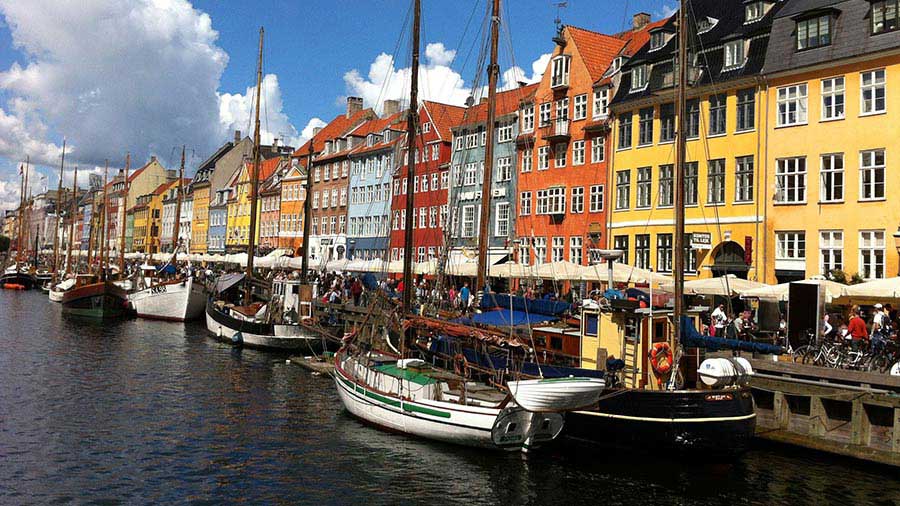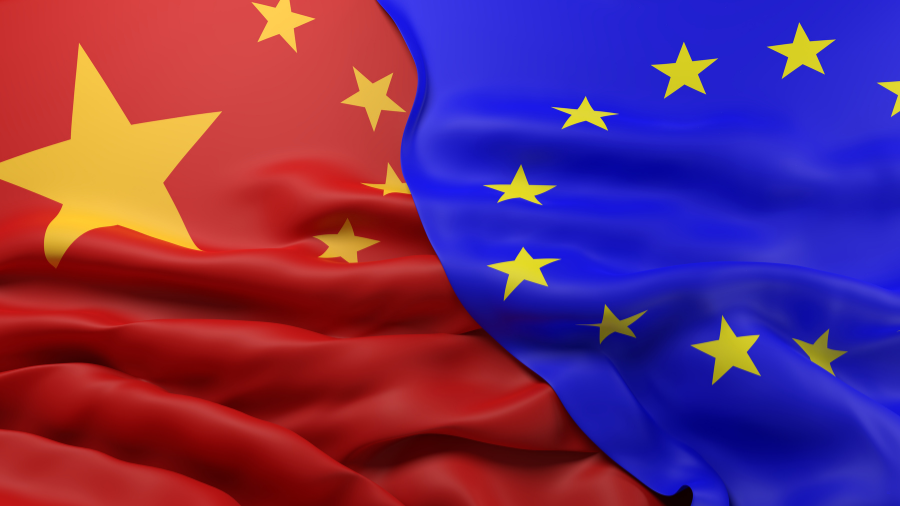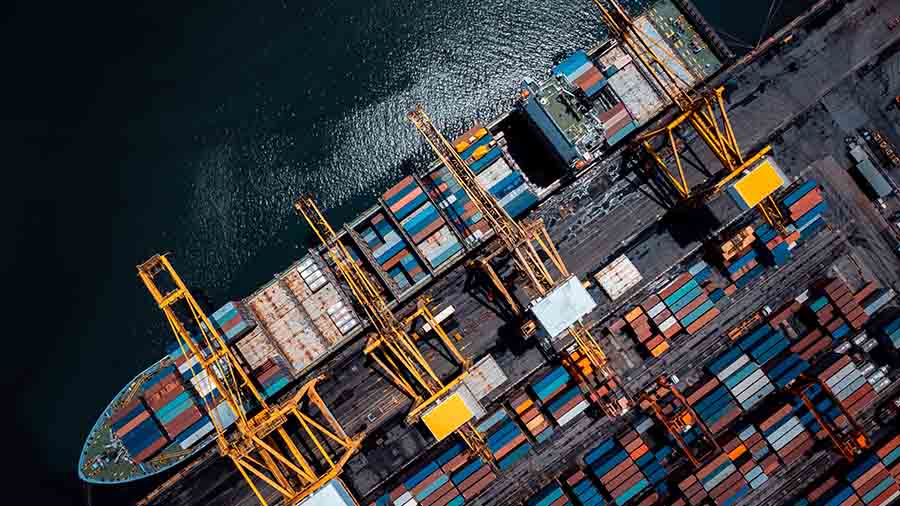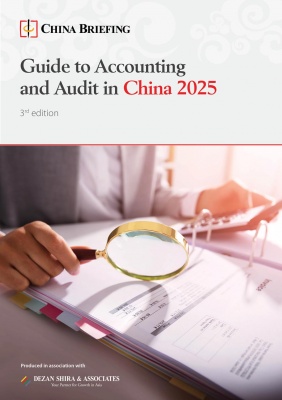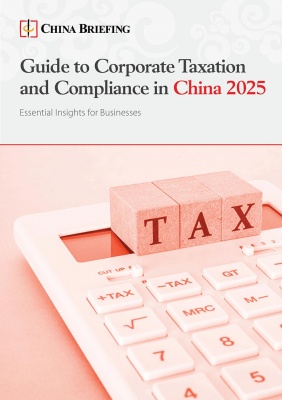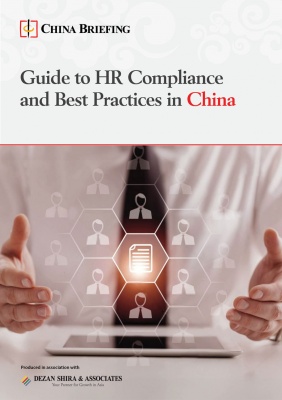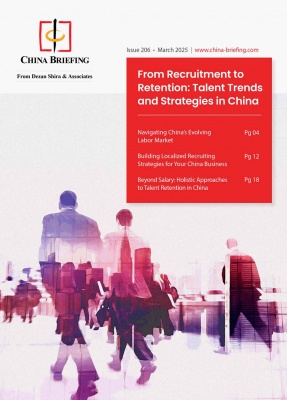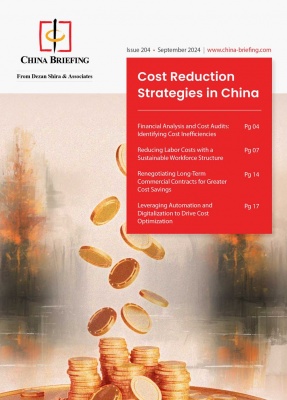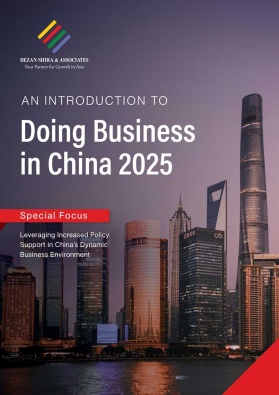China-Slovakia Economic Ties: Strengthening Cooperation and Future Opportunities
China and Slovakia share evolving trade and investment ties shaped by global economic shifts, geopolitical influences, and emerging industries. This article explores the trade fluctuations, investment trends, and strategic cooperation areas between the two nations. From automotive and high-tech collaborations to bilateral agreements and policy incentives, discover how businesses can tap into Slovakia’s favorable investment climate and navigate potential challenges for long-term success.
Slovakia, a central European nation and a key member of the Visegrád Group, has emerged as one of the most deeply integrated economies within the European Union (EU). Since joining the EU in 2004 and adopting the euro in 2009, Slovakia has strengthened its position in global markets, becoming one of the EU’s fastest-growing economies. With a highly open economy, the Slovak government actively promotes economic diplomacy, export growth, and foreign direct investment.
China and Slovakia share a long-standing diplomatic and economic relationship. Official ties date back to 1949 when China established relations with the former Czechoslovakia, and they continued seamlessly when Slovakia became an independent state in 1993. Over the decades, economic cooperation has been a cornerstone of bilateral relations, further deepened by China’s Belt and Road Initiative (BRI) and the China – Central and Eastern European (CEE) cooperation framework.
Marking 75 years of diplomatic relations in 2024, Slovak Prime Minister Robert Fico’s official visit to China underscored the growing strategic partnership between the two nations. Trade volumes between China and Slovakia reached US$9.72 billion in 2024, with China serving as Slovakia’s largest trading partner outside the EU and Slovakia ranking as China’s fourth-largest trade partner in Central and Eastern Europe (CEE). Beyond trade, Chinese investment in Slovakia continues to expand, particularly in high-tech industries, green energy, and innovation-driven sectors, presenting significant opportunities for businesses from both countries.
As China and Slovakia deepen economic engagement, this article explores the evolving trade and investment landscape, key sectors for collaboration, and strategies for businesses to leverage emerging opportunities.
China-Slovakia trade
According to China Customs data, bilateral trade between China and Slovakia totaled US$9.72 billion in 2024, reflecting a 15.8 percent decline year-on-year. China’s imports from Slovakia amounted to US$5.77 billion, down 20.2 percent, while exports to Slovakia reached US$3.95 billion, marking an 8.2 percent decrease. As a result, China’s trade deficit with Slovakia narrowed to US$1.83 billion, a 27.5 percent reduction from the previous year.
In terms of sectoral performance, the automotive and auto parts industry led bilateral trade, accounting for US$5.16 billion, despite a 20.2 percent year-on-year drop. Within this category, China imported US$4.54 billion worth of Slovak automotive products, down 25 percent, while exports in this segment surged 39 percent to US$620 million.
| China–Slovakia Bilateral Trade (2019-2024) | ||||||
| Year | Total import and export (US$ billion) | YoY (%) | Chinese exports (US$ billion) | YoY (%) | Chinese imports (US$ billion) | YoY (%) |
| 2019 | 8.89 | 14.3 | 2.92 | 15.3 | 5.97 | 13.8 |
| 2020 | 9.46 | 6.4 | 3.03 | 3.7 | 6.43 | 7.8 |
| 2021 | 12.09 | 27.8 | 4.55 | 49.9 | 7.55 | 17.3 |
| 2022 | 12.15 | 0.5 | 4.44 | -2.4 | 7.71 | 2.2 |
| 2023 | 11.53 | -5.0 | 4.30 | -3.0 | 7.23 | -6.2 |
| 2024 | 97.2 | -15.8 | 3.95 | -8.2 | 5.77 | -20.2 |
Source: Ministry of Commerce, China
Top import and export categories
Among China’s top imports from Slovakia in 2024, the leading categories were automotive and auto parts (US$4.54 billion), electrical machinery and equipment (US$680 million), and nuclear reactors, boilers, and mechanical appliances (US$300 million). Meanwhile, China’s primary exports to Slovakia included electrical machinery and equipment (US$1.74 billion), nuclear reactors, boilers, and mechanical appliances (US$700 million), and automotive and auto parts (US$620 million).
| Top China Imports from Slovakia in 2024 | |
| Category | Value (US$, million) |
| Vehicles other than railway or tramway rolling stock and parts and accessories thereof | 4,541.21 |
| Electrical machinery and equipment and parts thereof; sound recorders and reproducers, television image and sound recorders and reproducers, and parts and accessories of such articles | 683.43 |
| Nuclear reactors, boilers, machinery, and mechanical appliances; parts thereof | 286.80 |
| Wood and articles of wood; wood charcoal | 59.71 |
| Plastics and articles thereof | 38.38 |
Source: International Trade Centre (ITC), General Administration of Customs China (GACC)
|
Top Chinese Exports to Slovakia in 2024 |
|
| Category | Value (US$, million) |
| Electrical machinery and equipment and parts thereof; sound recorders and reproducers, television image and sound recorders and reproducers, and parts and accessories of such articles | 1,738.00 |
| Nuclear reactors, boilers, machinery, and mechanical appliances; parts thereof | 696.30 |
| Vehicles other than railway or tramway rolling stock and parts and accessories thereof | 617.17 |
| Articles of iron or steel | 120.51 |
| Optical, photographic, cinematographic, measuring, checking, precision, medical, or surgical instruments and apparatus; parts and articles thereof | 110.01 |
Source: ITC, GACC
Despite recent trade fluctuations, China and Slovakia continue to strengthen their economic ties, particularly in high-tech industries, automotive manufacturing, and machinery. As both nations explore new avenues for collaboration, businesses have opportunities to leverage bilateral agreements and investment incentives to expand their market presence.
Factors behind recent fluctuations in China-Slovakia trade
Since 2022, bilateral trade between China and Slovakia has been on a declining trend, driven by several key factors.
One major challenge has been global supply chain pressures and high inflation. In 2023, the global economic recovery remained sluggish, with supply chain disruptions and rising energy prices increasing business costs and dampening trade demand. As an EU member state, Slovakia has faced weakened import demand due to Europe’s high inflation and slower economic growth.
Structural trade imbalances have also played a role. China has traditionally maintained a trade deficit with Slovakia, but the gap has been narrowing. In 2024, China’s trade deficit with Slovakia stood at US$1.83 billion, a 27.5 percent reduction from the previous year. This shift reflects a sharper decline in China’s imports from Slovakia compared to its exports, potentially linked to the declining competitiveness of key Slovak exports such as automotive parts. Slovakia’s economy is heavily reliant on automobile manufacturing, which accounts for approximately 50 percent of its industrial output. Global disruptions in the automotive supply chain, including chip shortages and the shift toward electrification, have had a direct impact on its trade with China.
Geopolitical factors have also influenced trade patterns. The EU has been actively pursuing supply chain diversification to reduce dependence on China, implementing trade protection measures such as anti-subsidy investigations that could affect imports. As an EU member, Slovakia has been indirectly impacted by these policy shifts.
Finally, China’s industrial upgrading and import substitution have reduced reliance on certain imported goods. China has made significant strides in high-tech manufacturing, replacing some previously imported products with domestically produced alternatives. In 2024, China’s imports from Slovakia declined by 20.2 percent, which may reflect the impact of import substitution in sectors such as machinery and electronic components.
China’s investment in Slovakia
China’s direct investment in Slovakia remains relatively modest but has been growing steadily in key industries. According to China’s Ministry of Commerce, China’s direct investment flow into Slovakia reached US$210,000 in 2023, with a total cumulative investment stock of US$3.54 million as of December 2023. Chinese investments in Slovakia are primarily concentrated in telecommunications, logistics, automotive components, tire research and development, and renewable energy.
Recent investment projects highlight China’s expanding footprint in Slovakia’s high-tech and green industries. For example, Gotion High-Tech and Shenzhen Yilian have announced plans to establish manufacturing facilities in Šurany Industrial Park and Košice, focusing on electric vehicle (EV) batteries and battery cell connectors. These developments reflect the increasing opportunities for bilateral collaboration in advanced technology and sustainable industries.
Several Chinese companies have already established a presence in Slovakia, including Huawei, ZTE, Yanfeng Automotive Interiors, Jiangsu Xinquan Automotive Trim, Qingdao Soft Control, Fuyao Glass, CRRC Bogie Co., and CGL. Additionally, multiple Chinese enterprises have acquired controlling stakes in Slovak automotive component factories, while many others are exploring investment opportunities in EV battery production and new energy projects. This trend suggests a growing Chinese interest in Slovakia’s strategic industries, leveraging the country’s central European location and well-developed industrial base.
Slovakia’s investment appeal
Slovakia offers a compelling investment environment due to its strategic location, developed infrastructure, and competitive labor costs. Situated at the crossroads of East and West, Slovakia provides access to major European markets and is a member of NATO, the EU, the Schengen Area, and the Eurozone, making it an attractive hub for trade, investment, and technological collaboration.
Slovakia’s business climate and competitiveness are also notable. According to the IMD World Competitiveness Ranking 2023, Slovakia ranked 53rd among the world’s 67 most competitive economies. In the 2023 Global Innovation Index published by the World Intellectual Property Organization, Slovakia ranked 45th out of 132 countries. Meanwhile, a 2022 analysis by the Slovak Institute for Economic Analysis placed Slovakia 21st in terms of business environment and competitiveness among EU member states.
The Slovak government actively promotes economic diplomacy, prioritizing export growth, foreign investment attraction, and international innovation partnerships. It also provides various investment incentives to create an export-oriented, industry-driven market economy. Slovakia’s legal framework supports foreign investment through tax relief, cash grants, employment subsidies, and discounted real estate transactions. Special investment incentives apply to underdeveloped eastern regions such as Košice and Prešov, offering additional benefits for companies in these areas.
According to Slovakia’s National Investment Subsidy Law, eligible investment projects fall into four categories:
- Industrial projects: Minimum investment of €3.5 million
- Technology centers (advanced product development and manufacturing innovation): Minimum investment of €500,000
- Shared service centers (SSC): Minimum investment of €400,000
- Tourism projects: Minimum investment of €3 million
Slovakia also provides investment grants, corporate tax exemptions, job creation subsidies, and state-owned real estate transfers at below-market prices. Additionally, the Slovak Investment and Trade Development Agency (SARIO), under the Ministry of Economy, offers free services to international investors, including supplier matchmaking, production capacity monitoring, joint venture facilitation, and real estate database access.
The Slovak government is also advancing its digital economy agenda. Plans include adopting a Data Act to improve national electronic services, enhancing administrative efficiency through data-sharing, and eliminating redundant bureaucratic procedures. These reforms aim to strengthen Slovakia’s attractiveness as an investment destination for digital industries.
With political stability, a skilled labor force, and a supportive policy framework, Slovakia is well-positioned to attract further Chinese investment. As China expands its engagement in Europe’s green and digital economies, Slovakia’s EV supply chain, renewable energy sector, and high-tech industries present promising avenues for deeper economic cooperation.
Bilateral agreements
China and Slovakia have established several key bilateral agreements to promote investment and prevent double taxation, creating a more secure and predictable environment for Chinese investors.
- Bilateral investment protection agreement: In December 1991, China signed the Agreement on the Protection of Investments with the former Czechoslovakia. This agreement continued to apply after Slovakia became independent. In December 2005, China and Slovakia signed an Additional Protocol to further strengthen investment protection measures.
- Double taxation avoidance agreement: In June 1987, China and the former Czechoslovakia signed the Agreement on the Avoidance of Double Taxation, which remains in effect between China and Slovakia today. This agreement helps businesses and investors by preventing the same income from being taxed in both countries, reducing the tax burden for cross-border economic activities.
These agreements provide legal certainty and financial advantages for Chinese enterprises operating in Slovakia, encouraging further investment and economic cooperation.
Future outlook for China-Slovakia trade
The future of China – Slovakia trade will be shaped by both global economic uncertainties and emerging structural opportunities. While challenges persist, the overall trajectory is expected to be one of gradual stabilization with selective breakthroughs.
On the positive side, both countries have a strong foundation for policy coordination and industrial complementarity. Slovakia was the first Central and Eastern European country to sign a Belt and Road Initiative (BRI) cooperation memorandum with China. With improved connectivity through the China – Europe Railway Express and the Hungary – Serbia Railway, trade logistics between the two nations are expected to improve, reducing transportation costs. Slovakia’s strengths in automotive manufacturing (Volkswagen, Škoda) and solar panel production align well with China’s growing demand for new energy vehicles (NEVs) and clean energy solutions. This opens opportunities for collaboration in smart vehicle components and hydrogen energy technology. Additionally, Slovakia’s wine and dairy industries stand to benefit from China’s rising consumer demand for premium agricultural products. By adopting green certification standards and leveraging e-commerce channels, Slovak exporters can gain better market access in China. On the financial front, Slovakia’s central bank has included the renminbi in its foreign exchange reserves, facilitating renminbi-denominated trade, which could help mitigate currency risks and improve trade efficiency.
However, several hurdles remain. Slovakia’s exports to China account for just 3.2 percent of its total exports—significantly lower than other Central and Eastern European countries like Poland and Hungary—highlighting its limited market share in China. To expand its presence, Slovakia needs to focus on technological innovation and brand development. Additionally, competition from China’s advanced digitalized manufacturing poses a challenge for Slovakia’s traditional export industries, particularly in machinery and electronics. To stay competitive, Slovak companies must accelerate Industry 4.0 adoption and improve their value-added offerings. Geopolitical risks also loom large, with EU-imposed tariffs and technology export restrictions potentially disrupting trade. One way to mitigate these risks is through third-party market cooperation—for instance, Slovakia and China could jointly explore African renewable energy projects or Southeast Asian infrastructure initiatives, creating new channels for trade and technology collaboration.
Moving forward, green and digital economies are expected to drive the next phase of bilateral trade growth. China’s “dual carbon” targets and Slovakia’s Climate Protection Act create synergies for cooperation in battery recycling and hydrogen equipment development. Slovakia’s e-commerce platforms could integrate with China’s cross-border digital trade ecosystem (e.g., Temu, Shein), leveraging China’s logistics and digital payment infrastructure to expand global reach. Similarly, China’s Silk Road e-commerce initiative could help Slovak small and medium enterprises (SMEs) tap into China’s vast consumer market.
Scientific and technological collaboration will also be a key growth area. With Slovakia’s expertise in semiconductor manufacturing (Intel’s factory) and artificial intelligence, both countries could deepen industrial cooperation through joint research and technology licensing agreements, fostering an integrated “technology-production-application” value chain.
Over the next five to 10 years, China-Slovakia trade growth will depend on institutional openness and innovation-driven cooperation. China could leverage free trade zone policies and targeted investments to encourage local production in Slovakia, fostering a localized production-distribution-service model. Meanwhile, Slovakia must diversify its export structure, moving from raw materials to high-value-added industrial goods and technology services. Strengthening multilateral coordination, lowering non-tariff barriers, and adapting to global supply chain transformations will be essential for both countries to shift from quantitative growth to qualitative trade expansion, ultimately unlocking sustainable trade opportunities in new energy and digital industries.
Investment recommendations
To successfully invest in Slovakia, Chinese enterprises are advised to take the following steps:
- Conduct thorough research and assess risks: The legal systems, business cultures, and ways of thinking in China and Slovakia differ significantly. Before investing, companies should conduct comprehensive due diligence to understand local political and economic policies, legal regulations, taxation, labor laws, and environmental standards. It is advisable to leverage law firms, accounting firms, consulting agencies, and industry associations to mitigate investment risks.
- Comply with local laws and adopt a structured localization strategy: Chinese enterprises must ensure full legal and regulatory compliance when operating in Slovakia. Simply replicating business models from China or other countries may not be effective. Companies should develop clear localization strategies, including hiring local professionals, strengthening local management, and utilizing government support policies. Effective post-investment management is key to ensuring long-term business sustainability.
- Engage in corporate social responsibility (CSR) and community relations: Understanding local customs, values, and business etiquette is essential for fostering trust and cultural integration. Businesses should actively engage with local communities, contribute to social development, and maintain a positive corporate image through public relations efforts and media outreach.
- Enhance security awareness and prepare emergency response plans: Upon company registration in Slovakia, Chinese firms should promptly report their presence to the Chinese Embassy’s Economic and Commercial Office. In the event of emergencies or security incidents, businesses should proactively seek assistance from the embassy to safeguard their operations and personnel.
By following these recommendations, Chinese enterprises can maximize investment opportunities, minimize risks, and achieve sustainable business success in Slovakia.
Also Read:
- EU-China Relations After the 2024 European Elections: A Timeline
- China-Hungary Bilateral Relations: Trade and Investment Outlook
- China Outbound Direct Invest (ODI) Tracker: 2024-25
About Us
China Briefing is one of five regional Asia Briefing publications, supported by Dezan Shira & Associates. For a complimentary subscription to China Briefing’s content products, please click here.
Dezan Shira & Associates assists foreign investors into China and has done so since 1992 through offices in Beijing, Tianjin, Dalian, Qingdao, Shanghai, Hangzhou, Ningbo, Suzhou, Guangzhou, Haikou, Zhongshan, Shenzhen, and Hong Kong. We also have offices in Vietnam, Indonesia, Singapore, United States, Germany, Italy, India, and Dubai (UAE) and partner firms assisting foreign investors in The Philippines, Malaysia, Thailand, Bangladesh, and Australia. For assistance in China, please contact the firm at china@dezshira.com or visit our website at www.dezshira.com.
- Previous Article China-Ethiopia Trade, Investment, and Opportunities
- Next Article China’s Tightened Facial Recognition Regulations: Key Business Takeaways
